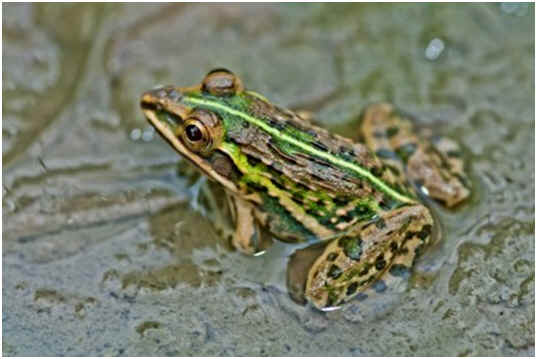
Can Frogs Drown?
Frogs can drown. Except for one aquatic species that live entirely underwater, all other frog species can drown if too much water enters their lungs.
They Start Out with Gills
Most frogs start their lives as fish-like tadpoles, with rudimentary gills that allow them to breathe underwater. Over two months to three years, depending on the species, the tadpoles grow legs, their tails shorten, their jaws develop into adult frog jaws, and their lungs appear. Alongside these changes, skin grows over the tadpoles’ gills, and the gills can no longer be used for oxygen intake.
How Frogs Can Stay Underwater for So Long
So if the frogs now use lungs for breathing as humans do, how can they stay underwater for so long? Are they just exceptionally good at holding their breath?
The answer to this lies in their skin. A frog’s skin is specially designed to allow for subcutaneous gas exchange so that frogs can breathe through their skin. When underwater, a frog can take in oxygen from the water this way. A frog can also take in oxygen when out of the water through its skin, but to do this, the skin has to remain moist. That is why frogs have their trademark slimy appearance.
Does this Mean They Cannot Drown?
Despite all of these adaptations, frogs can drown if, for any reason, too much water enters their lungs. In addition, if there is not enough oxygen in the water, and a frog cannot get to the surface for air, this will also cause them to drown.
The Frog That Does Not Drown
The aquatic frogs you usually see in pet stores are from the Pipadae family of frogs. These frogs, such as African Clawed Frogs, are different from most frogs because they spend their lives entirely underwater.
The Very Strange Reason these African Frogs are in North America
Several decades ago, African Clawed Frogs were used for a specific scientific purpose. A female African Clawed Frog would be injected with a urine sample taken from a woman. If the frog began releasing eggs, it meant that the woman was pregnant. When more efficient ways of testing for pregnancy came into being, the frogs were released into the wild, where they survived.
This family of frogs has a special adaptation in their ears that allows them to hear underwater, and like fish, they also have a lateral line for sensing vibrations in the water.
Resources
Wildlife Journal Junior
Pipidae – tongueless frogs
http://www.nhptv.org/wild/pipidae.asp
Britannic Academic Edition
Pipidae
http://www.britannica.com/EBchecked/topic/461429/Pipidae
Burke Museum
Frogs Q & A
http://www.burkemuseum.org/herpetology/frog_qas#question12





